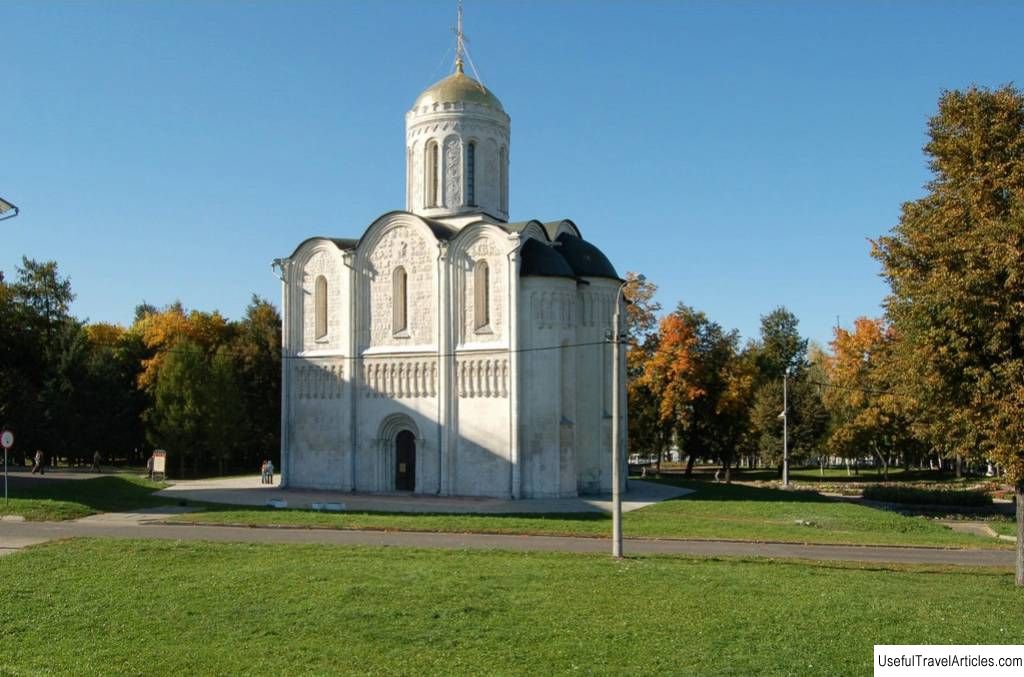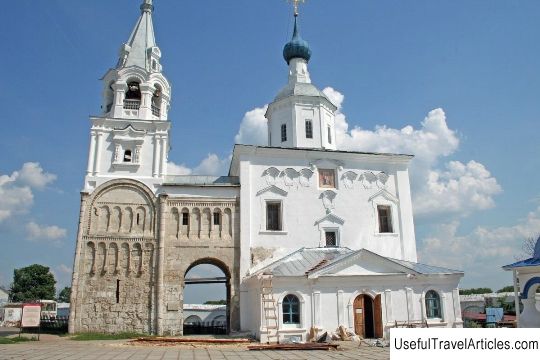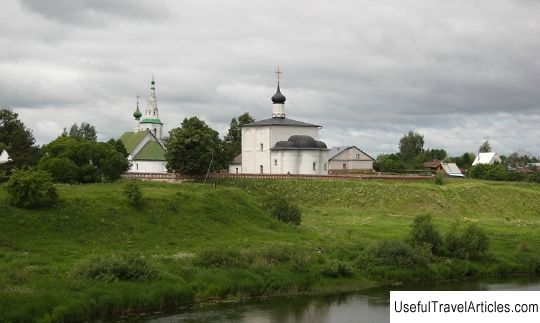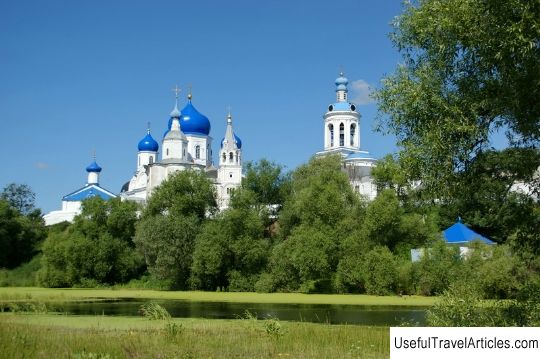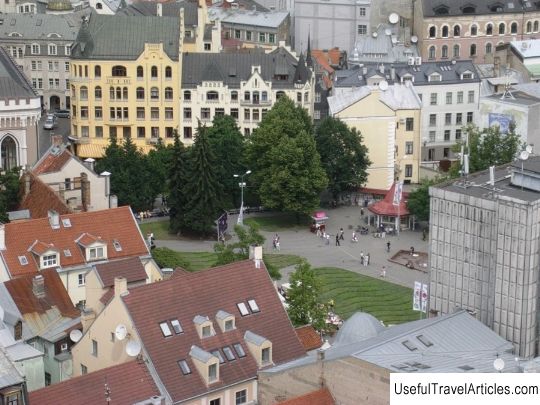Church of the Intercession on the Nerl description and photos - Russia - Golden Ring: Bogolyubovo
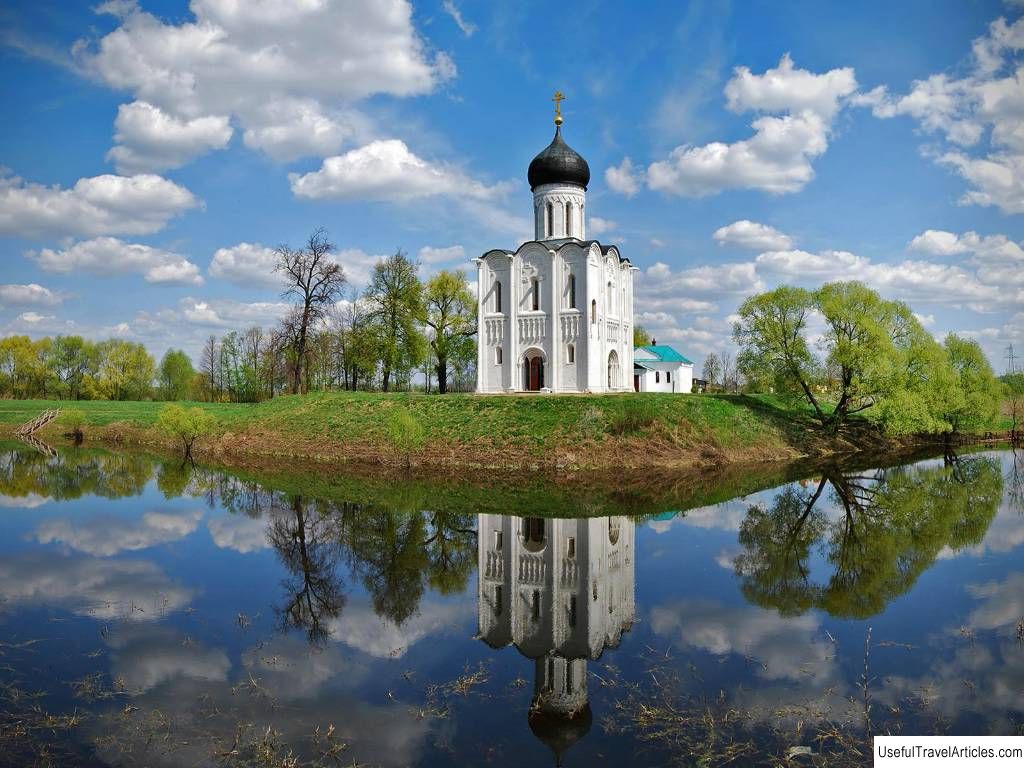
Church of the Intercession on the Nerl description and photos - Russia - Golden Ring: Bogolyubovo. Detailed information about the attraction. Description, photos and a map showing the nearest significant objects. Photo and descriptionThe Church of the Intercession on the Nerl, "a poem in stone", is rightfully considered one of the main symbols of Russia. It is included in the UNESCO World Heritage List, it is known everywhere, and its beauty is worth seeing at least once. History of the templeIn the 12th century, Vladimir-Suzdal principality flourished . It becomes the center of the Russian lands and lays the foundation for the development of its successor, the Moscow principality. Active construction in and around Vladimir is associated with the name of Prince Andrey Bogolyubsky - it was during his reign that the principality achieved unprecedented power and wealth. He surrounded Vladimir with a new wall, built a new Assumption Cathedral there and founded his residence not far from the city - in Bogolyubovo. The prince fought a lot: in 1169 he took Kiev, in 1170 he besieged Novgorod and, as a result, concluded a beneficial peace for himself, went on campaigns to the Volga Bulgaria. On the second trip, he took with him his eldest son - Izyaslav . He was wounded, and after returning to Vladimir he died of his wounds. It was in memory of the young prince, who died before he was eighteen, and the Church of the Intercession on the Nerl was built . The annals say that it was built for only one season, so most often the date of its construction is considered 1165 - the year of Izyaslav Andreevich's death. However, other scholars call slightly later dates - 1166 or 1167, and some believe that it was built several years earlier, along with the entire complex of Bogolyubov's buildings. The church was consecrated in honor of the Feast of the Intercession . It is believed that this holiday began to be massively celebrated in Russia under Andrei Bogolyubsky - he loved him. The fact is that this holiday is associated with the name of Saint Andrew the Fool - the heavenly patron of the prince. It was St. The Mother of God once appeared to Andrew, extending her veil over the worshipers who asked her for protection. Under Prince Andrei Bogolyubsky, the Byzantine holiday began to be especially celebrated in Russia and soon became one of the most beloved among the people. However, according to other versions, this holiday appeared later, and the church was originally simply dedicated to the Mother of God. The fact is that all other Intercession churches and all the icons of the Intercession of the Virgin that have come down to our time date from a later time. The church was once located at the very mouth of the Nerl River - there, where it fell into the Klyazma. Since then, the channel has shifted, and the building turned out to be standing near the picturesque oxbow. And then it was in the most conspicuous place - just where the merchant ships turned towards Bogolyubov, and, as it were, met everyone passing by. At one time around this temple there was a small Pokrovsky Monastery . In the 17th century it was even quite rich, but in the middle of the 18th century it was abolished. This was in 1764, and the church itself was assigned to the nearby Bogolyubsky monastery . But it stood in the distance and almost did not bring any income, so in 1784 it was even almost taken down to stone. Official permission for this was received, but analysis also requires funds - and they were not found at the Bogolyubsky monastery, so the church miraculously survived. Scientific research of the church began in the middle of the 19th century. Architect and restorer N. Artleben begins the study of Vladimir-Suzdal architecture. He creates a project for the restoration of the Golden Gate in Vladimir , and in 1858 he excavates around the Intercession Church. In 1877, the church was restored and rather unsuccessfully - because of this restoration, for example, the original fresco painting was completely lost. The temple operates until 1923, then it is closed. In the 1950s, new excavations began under the leadership of N. Voronin . Since 1992, the temple has been included in the UNESCO World Heritage List. Now the church is active, access to it is open to everyone. The frescoes have not been restored , so inside it is perfectly simple and light, and no less impressive than outside. Poem in stone The artel, which Andrei Bogolyubsky hired for the construction, consisted of craftsmen from different countries. For example, it is known that the famous emperor Friedrich Barbarossa sent several craftsmen for her to Andrew. The construction was not very simple: the place at the very mouth of the river could be flooded, so first an artificial hill was poured using the most advanced technology of that time. A deep foundation was laid, stone walls four meters high were built on it, they formed the basis of the hill and were covered with earth, and on top they were still lined with stone. By now, the hill is somewhat donkey - its height is only three meters. But anyway, the church was built so firmly that spills do not threaten it even now. The current appearance of the church, which seems to us so beautiful and harmonious, is not quite what people thought and saw in front of them in the 12th century. From the original appearance, only the main volume with one chapter has been preserved . Now the temple has a bulbous end, but in those days, most likely, the dome was helmet-shaped. Moreover, most likely, the church was surrounded by wide galleries . Their remains were found during excavations. But, unfortunately, there is no exact dating of the appearance of these galleries. In any case, they were built on an equally solid foundation, and their height was five and a half meters. Traces of them have survived in the very appearance of the church: if you look closely, you can see that its windows on the southern facade are asymmetrical. Once there was an internal staircase, and from the gallery one could immediately get to the choir of the church. There is not one, but several options for reconstructing the original appearance of the temple. We owe the main information to the architect-restorer N. Voronin, who carried out research in the 1950s. It was he who created the first reconstruction of the galleries. But in fact, we do not know whether these galleries were open or closed, how exactly they looked and what they were made of - whether they were entirely wooden or partially stone. The main decoration of the Church of the Intercession-on-Nerl is the "trademark" of the Vladimir-Suzdal architecture of this time - a magnificent white stone carving ... The images of King David indicate that the church was "princely". Images of lions - symbols of strength - are a typical motif of Old Russian carving. The birds depicted on the walls can be pigeons, symbols of peace and simplicity, or they can be eagles - symbols of the height of the spirit. There are images of griffins with deer: in Christian symbolism, the classic "scene of torment" has been rethought. Griffins symbolize Christ who catches souls. Despite the fact that there are similar images on the walls: King David, lions, griffins, birds - there is not a single one of them that is alike . It is believed that they were performed according to the same pattern, but by different craftsmen. Women's faces are generally a mystery - there are nineteen of them preserved along the entire perimeter of the church. They all have different features, perhaps even with a portrait resemblance to some unknown girls. It is believed that they symbolize not the Mother of God herself, but the procession of the righteous virgins who accompany her. The carved belt in the form of arches and half-columns with figured consoles has direct parallels in Italian architecture - perhaps , it was performed by western masters. All consoles are different, sometimes beautiful, sometimes grotesque, and you can endlessly guess about their meaning. But, in any case, in western medieval cathedrals they also liked to depict strange chimeras and other monsters. Next to the famous Church of the Intercession there is another one - Church of the Three Saints built in 1884 . Now it is used as a souvenir shop and gatehouse. Interesting facts
Notes
|














